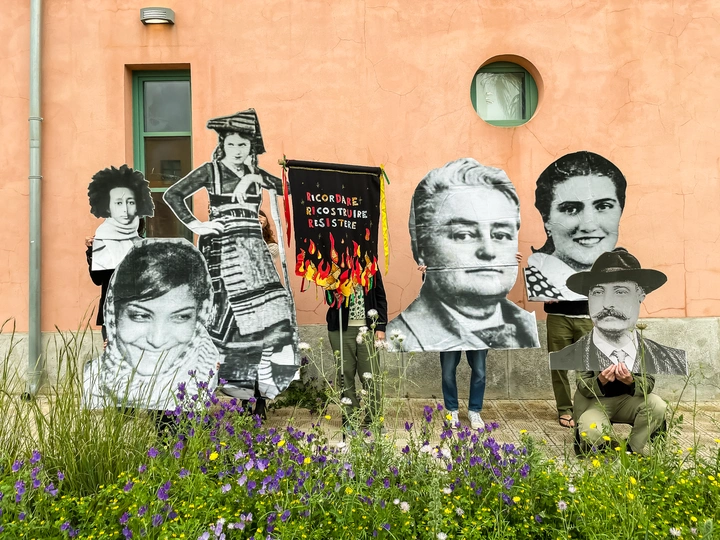Counter-Monuments and Difficult Heritage

Laura Fiorio (1985, lives and works in Verona) is an artist working with photography, performance and relational practices. Her projects interact with archival objects, questioning the power dynamics embedded in the editing process of creating memories, their political use and their critical and transformative potential. In her practice, she facilitates collaborative narratives by addressing the entanglement between intimate and institutional histories and fosters discussion on heritage. She holds a BA in Performing Visual Arts (Venice), an MA in Art and Social Work (Berlin) and a Postgraduate Degree in Decolonizing Architecture (Stockholm). Her work was internationally exhibited and produced independently or in collaboration with institutions, including Biennale, Sale Docks (Venice/IT), CeCuT (Tijuana/MX), Shanti Road (Bangalore/IN), Festival Internacional de Fotografia (Valparaiso/CL), ECCHR and House of the Cultures of the World (Berlin/DE). Fiorio has been guest professor at the Universidad de Baja California, Tijuana, Mexico, and University for Arts and Cultures, Ulaanbaatar, Mongolia, among others. Furthermore, she has been working on social projects in prisons, refugee shelters and with homeless people in Mexico, Italy and Germany.
In 2025 she is Talent for Futures Platform, selected by the Hamburg Triennial of Photography under the artistic direction of Mark Sealy. She is also Archivo Lab fellow 2025 and invited resident artist at IASPIS, Stockholm.
This research investigates how collaborative photography and performative spatial practices can decolonize dominant narratives by merging intimate memory with public space. Starting from a personal archive—vernacular photographs taken by my grandfather during the Italian occupation of Ethiopia—the project reactivates erased histories of colonial violence and resistance through dialogical, participatory methods.
At its core is a site-specific and dialogical methodology, rooted in collective autoethnography and critical fabulation. Participants—students, activists, and diasporic communities—engage in workshops that bring personal stories into dialogue with architectural sites marked by authoritarian or colonial pasts. These encounters generate new, co-authored visual narratives that challenge official commemorative forms and activate contested urban spaces.
The architectural approach critiques how fascist and colonial ideologies persist materially in Europe’s built environment—monuments, street names, and imperial architectures. These static forms are subverted through ephemeral, embodied interventions: large-scale projections, temporary sculptures, and performative actions that transform spaces of denial into platforms for civic reflection. These counter-monuments do not impose a single narrative but hold space for multiplicity and dissent.
Working across Mediterranean and post-imperial geographies, the project establishes a civic spatial practice where memory becomes an act of collective imagination. Photography operates not just as a visual tool but as an infrastructural device for public dialogue, bridging private archives and urban memory. In a time of rising historical revisionism, this work reclaims space as a medium for counter-memory and public truth-telling.